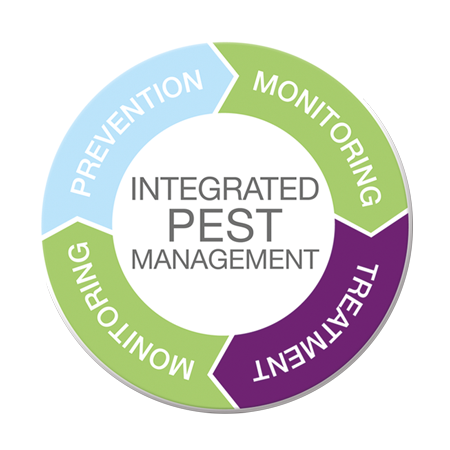Integrated Pest Management (IPM)
at International Line Pest Control Bahrain
Integrated Pest Management (IPM) is an effective and environmentally sensitive approach to pest management that relies on a combination of common-sense practices.
enquire now complianceIPM programs use current, comprehensive information on the life cycles of pests and their interaction with the environment. This information, in combination with available pest control methods, is used to manage pest damage by the most economical means, and with the least possible hazard to people, property, and the environment.
Integrated Pest Management Program in ILPC
IPM is not a single pest control method but, rather, a series of pest management evaluations, decisions and controls. In practicing IPM, we at ILPC follow a three-tiered approach. The three steps include:
- Set Action Thresholds
- Monitor and Identify Pests
- Control

Step 1
Set Action Thresholds
Before taking any pest control action, ILPC first sets an action threshold, a point at which pest populations or environmental conditions indicate that pest control action must be taken. Sighting a single pest does not always mean control is needed. The level at which pests will either become an economic threat is critical to guide future pest control decisions.
Step 2
Monitor and Identify Pests
Not all insects, weeds, and other living organisms require control. Many organisms are innocuous, and some are even beneficial. ILPC IPM programs work to monitor for pests and identify them accurately, so that appropriate control decisions can be made in conjunction with action thresholds. This monitoring and identification removes the possibility that pesticides will be used when they are not really needed or that the wrong kind of pesticide will be used.
Step 3
Control
Once monitoring, identification, and action thresholds indicate that pest control is required, ILPC IPM programs then evaluate the proper control method both for effectiveness and risk. Effective, less risky pest controls are chosen first, including highly targeted medicines, or mechanical control, such as trapping. If further monitoring, identifications and action thresholds indicate that less risky controls are not working, then additional pest control methods would be employed, such as targeted spraying of pesticides.
Let’s have a talk
Just fill in your details and send us we will get back to you soon
We committed to keep you safe… value our customer and environment.






